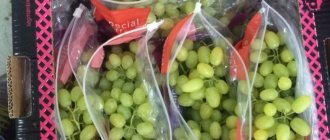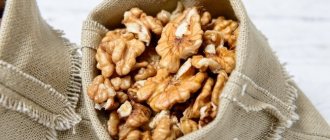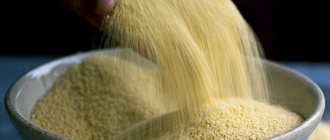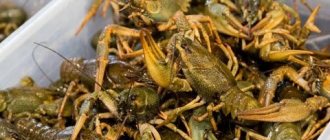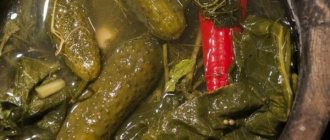A good housewife strives to stock up for future use, and simple conservation is not enough. But if the rules for storing jars of pickles are known to almost every housewife, not many people know how to store nuts at home. Often, women purchase already peeled kernels and place them in the cupboard, but soon discover an unpleasant discovery: moldy or dried nuts that have completely lost their original taste. It would seem that nuts are not too picky about their contents, but to preserve all the vitamins and microelements in their composition, it is important to know a few simple tips.
Rules for choosing good nuts
Hazelnuts
You need to be careful when choosing this product in order to get the full range of useful substances. If the purchased product initially has some defects, chips and traces of mold development, proper storage will play a small role. Pay attention to several criteria for normal nuts:
- there should be no chips;
- nuts should not be too dried out or broken;
- ensure the uniformity of the shade: there should be no stains or traces of mold;
- shells must be smooth and uniform;
- when shaking the nut, no loud knocking should be heard: this happens with half-empty fruits;
- the smell should be pleasant;
- There should be no unevenness or wrinkles.
To purchase the most natural nuts possible, it is important to monitor the country in which they are purchased. For example, cashews are often imported from the Middle East, walnuts from France, pistachios from Iran, and peanuts are very popular in China.
How to choose nuts and dried fruits for storage
Let's start with the fact that not all dried fruits and nuts are ready for long-term storage. When buying such products for future use, you need to take into account several nuances:
- Dried fruits should be well and evenly dried (preferably naturally). The residual moisture of the product should not exceed 20-25%;
- It should be understood that not a single fruit will become brighter or more beautiful as a result of natural drying. Excessively bright color should alert you, as this may be a sign of the use of dyes and preservatives;
- Raisins, dried apricots, apricots, prunes, figs and other dried fruits should have a slightly matte surface; excessive shine is a sign of additional treatment with glycerin or other chemicals;
- In the process of proper drying, dried fruits darken and acquire a gray tint;
- The product must not have any foreign odors, including the taste of smoke, the smell of gasoline or diesel fuel;
- Dark raisins should be almost black in color, and a bluish coating is considered normal;
- High-quality dried apricots may be light yellow due to their high carotene content, but a bright orange color indicates that the manufacturer uses dyes and preservatives;
- Walnuts and hazelnuts should be free of dark spots, spots, traces of mold and gray deposits.
When choosing dried fruits for long-term storage, discard sticky and damaged fruits. They should have a uniform color, be approximately the same size and have a uniform degree of drying. Storing dried fruits with high humidity is only possible in the refrigerator. It is also better to avoid overdried dried fruits. If raisins or dried apricots break when bent, this indicates a violation of the drying or storage technology.
As for the country of origin, it is better to give preference to dried fruits and nuts from the countries of Central Asia - Uzbekistan, Tajikistan, Iran and Kyrgyzstan. But it is better to refuse Chinese products, since they are not particularly useful.
Before sending for storage, the fruits should be carefully sorted and sorted. Dried fruits with traces of the presence of insects should be separated from the rest, as well as fruits with rotten areas. After removing problem areas, such dried fruits can be thoroughly washed and used for compote or pie filling.
Which nuts keep for a long time?
Peeled hazelnut kernels
During research, archaeologists were able to find several nuts in the ancient Egyptian pyramids, and by the way, they had a wonderful taste and smell even after many centuries. This result is due to the fact that the inside of the pyramids is protected from external environmental factors, which means they have an even temperature regime, darkness and dryness necessary for the kernels. Since modern homes have high levels of sunlight, ovens, and batteries, the maximum shelf life for in-shell nuts is six months, and for peeled kernels - two months.
How to tell if nuts have gone bad
Spoiled nuts are given out by:
- Color.
- Smell.
- Taste.
An externally suitable kernel may have a bitter taste. Foreign odors also indicate a spoiled product. In addition, dark spots or plaque may appear on the shell. This is not always the norm.
Nuts are not subject to heat treatment . No amount of drying or frying will save them. Bad copies should only be thrown away.
Rules for cleaning nuts
Cleaning walnuts
Most often, owners prefer to buy already peeled kernels, because they do not want to waste their time on long and painstaking cleaning. Some nuts have such a strong shell that it is impossible to get rid of it without special tools. The most difficult ones in this regard are chestnuts and Manchurian nuts. In addition to nuts in the shell, we must not forget about the protective film that covers the kernels and gives them a bitter taste. It's also not easy to get rid of.
Several ways to clean nuts
Device for chopping garlic:
- place the nut in the device;
- press on the contents, gradually increasing the force;
- remove the nut after the shell cracks.
Pliers:
- place the fruit in one hand and the pliers in the other;
- pinch the nut between the arched sections;
- wait until the shell cracks.
Rolling pin + bag:
- pour the kernels into the bag and align them in one layer;
- roll out the rolling pin, pressing slightly on it;
- You can knock on particularly hard nuts. You can use a hammer instead of a rolling pin, but you need to tap the contents of the bag.
How to peel a coconut
Sometimes you want to pamper yourself with something exotic and mentally go to distant islands, where there is summer, sun, palm trees and white sand. Coconut will help you feel like the hero of an advertisement for a Bounty bar. But how difficult it is to get to its contents!
Cracking a coconut seems difficult only at first glance. You will need a sharp knife with a narrow blade or a regular screwdriver, a hammer and a little of your time.
First, a liquid is “extracted” from the inside, which is often called coconut milk. They do this as follows:
- First, find the “eyes” on the nut.
There are only three of them - two small and one slightly larger. The so-called “eyes” are located on the side where the coconut was once attached to the palm tree - Using a knife or screwdriver, punch a hole in the largest “eye” (it is softer than the others).
The hole can be made with a sharp knife - Then turn the nut over the container and pour out the liquid.
Coconut milk will flow out easily if you make a hole in the large "eye"
You can also insert a cocktail straw into the hole and drink milk straight from the coconut!
You can drink coconut milk straight from the nut through a straw!
How to split a coconut into two halves:
- Take a coconut in one hand and a hammer in the other.
- Start tapping the nut in a circle (draw a line down the middle of the coconut with a knife).
A regular hammer will help you crack a coconut.
- Knock until cracks appear.
- Divide the nut in two with your hands.
- Remove the pulp using a knife.
The pulp is separated with a knife, piece by piece.
Instead of a hammer, you can use a large kitchen knife. The blows are applied with the blunt side of the blade. Then they take out the pulp with the same knife, making cuts in it and moving the blade away from the hard shell.
The coconut can be broken into two parts using a kitchen knife.
Video: how to easily break a coconut
Nuts that do not require peeling
Dried ground almonds
Not all nuts need to be shelled. For example, ground almonds do not need to be peeled, since they are not even a nut, but the fruits of the edible Cyperus plant. Before storage, it should be washed and dried, distributed into bags and placed in a basement or room with appropriate temperature conditions. Ground almonds wrinkle so much after drying that it is basically impossible to peel them.
But cashews, for example, are sold only without the shell. Cashew shells contain a dangerous poison that causes severe burns if it comes into contact with the skin.
Useful tips and possible problems
Peeled nuts are the most susceptible to spoilage. It is not advisable to store them in plastic bags. They sweat in them. Coconut should not be placed next to apples or bananas, as it will rot. But cashews are not allowed to be kept near an electric or gas stove, or near a battery. Otherwise, the fruits will lose their natural taste and begin to secrete excess oil.
Nuts are a valuable and nutritious product. But you need to be able to store them correctly. Knowing the ideal conditions for each type of kernel, they will lie for a long time, remaining fresh, tasty and healthy.
Storing ground nuts
Ground walnuts
Owners often store large quantities of ground nuts to create culinary and confectionery masterpieces. However, it is not correct to store crushed nuts for too long: they quickly become unusable and can cause great harm to your health. For example, ground walnuts can be stored for one to three weeks. Almond petals become unusable just a few days after grinding. Therefore, it is not worth storing ground kernels, the only exceptions being coconut kernels or ground nutmeg. They can be stored in a closed container for almost a year. If the kernels are ground before cooking, all the taste and aroma characteristics of the product will be preserved.
Proper preparation for long-term storage
First of all, all nuts must be selected . That is, you need to select all the bad copies from the mass so that they do not deteriorate in the future. Because of one spoiled nut, the rest may begin to spoil.
Next, dry the treat thoroughly. This can be done in several ways:
- Spread the nuts on a flat surface in hot weather . Then they will dry thoroughly naturally. The sun and wind will do all the work.
- Heating in the oven or on the stove . The main thing is not to overdo it. The temperature should not exceed 45 degrees. You should also scatter the nuts in 1 layer.
How to store walnuts
Storing walnuts in the refrigerator
Walnuts are a real storehouse of vegetable fats, but that is why they quickly acquire a bitter taste and smell. In order for them to be stored as long as possible, it is important to prepare them correctly:
- Fresh kernels should be fried in a frying pan without oil for twenty minutes and then cooled.
- If you intend to eat these nuts within one or two weeks, place them in a glass container and cover with a lid. Place in a warm and dry place. It is important that the storage area is not too humid, as this will cause the nuts to become moldy.
- If you need the product for two to three months, you should place it in a dry container and place it on the top shelf of the refrigerator.
- They can be stored in the freezer for up to a year. Nuts should be wrapped in cling film and placed in the freezer.
- After freezing, walnuts should be heated for ten minutes. By the way, this will make them even tastier.
Consumption of walnuts helps prevent premature aging of the brain, strengthens memory and improves concentration. No wonder the contents of the shell are so similar to the human brain! Schoolchildren and students should add this delicacy to their diet, since mental work is important for them.
Features of purchasing shelled nuts
In general, you should not buy a purified product. Especially if the kernels are crushed, the shelf life of such a product will be shorter, and they will spoil much faster. It is also worth looking at the color of the kernels: if the nut is old, they turn yellow, and the color becomes unnatural.
It is difficult to check the freshness of nuts in markets, so try not to buy this product there (Photo: hopskipandaflight.com)
Under no circumstances should you purchase nuts with dark spots or an unpleasant odor. The fact is that such products most likely contain aflatoxin fungi, which produce substances hazardous to health. You should also avoid buying roasted and salted nuts. It is unknown what oil the manufacturer used to fry them, what spices were added, or under what conditions they were stored. As a result, such a product may simply be dangerous.
Pine nuts: storage
Shelled pine nuts in storage
It is better to buy pine nuts with shells and peel them yourself. In order to provide the cores with the most adequate storage, follow our algorithm:
- Roast the nuts on a fire or frying pan. Once the buds have cooled, clean them by hand or using a grinder.
- Fry the nuts extracted from the cones in a frying pan without oil for twenty minutes, stirring regularly.
- Dry the kernels on a tarp for three days, turning them constantly.
- Distribute the finished kernels into canvas bags and place in a dry and warm place.
Store the bags in a place that is protected from rodents and completely dry. If you place the kernels in plastic bags, seal them tightly and place them in the refrigerator, they can be stored for several months. If you fill a glass jar with pine nuts and place them in the refrigerator, they can be stored for about three months at home.
Coconut
A whole coconut can be stored at a temperature of +4 to +7 °C for 3 months, after which its flesh will be hard and there will be almost no liquid left inside. It is important that it is intact and that when shaken, you can hear the milk splashing inside. Do not store coconut in a hot room or near bananas and apples, otherwise it will soon begin to rot. Also, do not expose the nut to temperature changes. Opened coconut should be stored only in the refrigerator and for no more than three days. Pour the coconut milk into a container with an airtight lid. Sometimes a thick mass may form on it, it is called cream. It is not a sign of spoilage of the product; it can be eaten. It is possible to make shavings from the pulp, which will be stored for up to 12 months. To do this, grind it, dry it in an oven preheated to +50 °C or use an electric dryer.
Hazelnuts: storage
Storing hazelnuts in a bag
Adequate storage of hazelnuts will help to significantly increase the lifespan of this tasty, and most importantly, healthy product. Long-term preservation is only possible if you purchased a natural product: fried and salted nuts cannot be stored for a long time at home.
Storage conditions:
- Storage should be carried out in a dry and cool place, namely in dense cotton or linen bags;
- Up to +12 degrees Celsius, the nut can be eaten for about a year; up to +3 degrees, it can be stored for about 3 years;
- You cannot mix different varieties of nuts with each other.
- Peeled hazelnuts can be kept in a sealed container for about three months.
You can store nuts at home either in the refrigerator or in the cupboard. The main thing at this point is to maintain the required temperature conditions and ensure that there is no moisture in the storage area.
Hazelnuts can strengthen the human cardiovascular system, reduce cholesterol levels, purify the blood, increase hemoglobin levels and improve heart function. Thanks to it, blood vessels become stronger, the nervous system becomes more stable, and the brain functions much better. We must not forget about the beneficial property of hazelnuts in preventing the proliferation of cancer cells. And of course let’s mention the wonderful taste of the nut!
Storing hazelnuts in jars
Hazelnuts last the longest. Packaging for hazelnuts must have a closing lid, such as glass jars. Shelled nuts are stored in bags, and using regular bags is highly discouraged. This nut is best stored at cold temperatures, for example, in a refrigerator or freezer.
Hazelnuts with a bitter taste need to be exploited quickly, otherwise they will become moldy and begin to secrete various oils. Hazelnuts strengthen the body and help to recover after operations. Even a handful of hazelnuts can relieve a person from hunger. Improves the functioning of the gastrointestinal tract, muscular system, cardiovascular, nervous system and improves brain functioning. It is able to cleanse the body of waste and toxins, fights helminthiasis and is actively used in cosmetology due to its ability to improve the condition of nails, skin, hair and teeth.
Features of storing peeled fruits
Many people clean their nuts in advance. But it should be remembered that kernels should not be stored in the open air for a long period. This can lead to their rapid deterioration; the kernels will begin to quickly absorb unpleasant odors. Therefore, they are stored in jars (made of glass or metal), always with lids.
Some housewives are accustomed to using plastic bags for this, but this should not be done, since the product will quickly become unsuitable for food.
Peeling nuts can be stored in the freezer, and only in this case a plastic container or polyethylene will do.
When buying already peeled nuts, there is a risk of bringing moths and other pests into the house. To avoid this problem, it is better to warm the nuts after you bring the product from the store:
- heat the frying pan;
- send the kernels for 2-3 minutes, wait for them to cool and place them in jars.
This procedure will free the fruits from excess moisture, and will not in any way affect the nutritional properties of the nuts.
Almonds: storage
Storing almonds in a jar
Regular consumption of almonds helps improve skin condition. In addition, it is acquired due to its excellent taste and pleasant aroma, so care should be taken to properly store the nuts.
- Peeled nuts should be stored at a temperature of 16-18 degrees.
- Humidity levels should not be more than 70%.
- Almonds can be stored in a vacuum container for about 6 months.
- Peeled almonds are poured into a glass container and lowered into the basement or cellar.
Peeled almonds quickly go rancid when kept at room temperature and in a bag. It is important to provide it with suitable storage conditions.
Almonds are good for the cardiovascular system, improve brain function and prevent the occurrence of Alzheimer's syndrome. We must not forget about strengthening the nervous system and getting rid of seasonal depression! Almonds are beneficial for people with diabetes by protecting the body from the intake of large amounts of glucose. The abundance of dietary fiber helps to “cleanse” the body of toxins and improves intestinal function.
Why are nuts good and healthy?
The benefits of eating nuts are obvious. Fruits have long been a companion to human life and occupy a worthy place in it due to the fact that they contain:
- healthy unsaturated fats;
- fiber;
- vitamins and minerals, microelements.
When present in the human diet, nut kernels have a positive effect on the human immune system, promote healthy skin and hair, increase hemoglobin levels and reduce the concentration of cholesterol in the blood.
Important. The energy value of nut kernels is very high and is manifested by their increased calorie content.
Brazil nut: storage
Storing Shelled Brazil Nuts
These nuts can only be stored peeled, but it is most profitable to purchase them with shells. They are not easy to find on the shelves of domestic stores, since peeled kernels are usually sold.
Proper storage is determined by the following rules:
- Store nuts at temperatures up to eight degrees Celsius.
- A dark and dry place is best.
- Do not place the kernels in a bag: it is better to choose containers that protect the contents from environmental influences.
- Roasted and salted Brazil nuts will keep for up to three weeks.
Brazil nuts contain arginine, which promotes blood clotting, as well as mineral compounds that help prevent the proliferation of cancer cells and the occurrence of cardiovascular diseases. It helps normalize blood sugar levels, cleanse the body of cholesterol and protect the body from the symptoms of premature aging. They can be consumed salted, fried or raw.
General storage conditions
Despite the fact that certain varieties of nuts require special conditions, there are basic rules for fruits that make it possible to preserve their original structure. Nuts do not tolerate well:
- dampness and humidity;
- exposure to the sun;
- elevated temperature.
Humidity
Due to increased exposure to a humid environment, the kernels begin to become moldy, and fungus develops inside them. As a result, they will become completely unsuitable for further use. Due to excess heat, they simply dry out gradually.
Temperature
It is recommended to store the kernels in a dark, dry place. The cooler it is, the longer the fruits will remain fresh. Other conditions include:
- the temperature is about 20 degrees C, but it is better if it varies from + 10 to - 5;
- humidity not higher than 40%;
- Once every two months, the fruits should be checked, removing unsuitable kernels.
These are the conditions that must be met in order for the natural product to meet all the necessary requirements for a long time.
Sun rays
As for the sun hitting their surface, they release oils that give them a bitter taste.
Is it possible to store different nuts together?
Nuts of different types can be stored together if they are packaged in separate containers. You should not put different fruits in one plastic bag. And you should not place them near smelling products, as they have the ability to absorb neighboring aromas.
However, there are some fruits that require individual conditions unlike other kernels. Thus, coconut does not tolerate humidity well, which drops below 50%. Its pulp loses its natural taste and juiciness disappears.
8 ways to protect cereals from pests
Chestnuts will quickly spoil on the shelf in the refrigerator, becoming moldy. In an ordinary room, they also do not lie for a long time, gradually drying out. They need to be buried in sand. But pine nuts will retain their properties better if they are placed in a cold environment.
Cashews: how to store?
Storing cashews in a bag
If you have purchased a handful of delicious cashews, you can simply place them in a vase and leave them on the table: your household will quickly sort out the delicacy. If you have purchased a large number of cores, please read our further recommendations:
- Under temperature conditions of 16 degrees Celsius and degrees no more than 75%, nuts can be stored in a container for no more than a month.
- Cashews can be stored in vacuum-sealed containers for six months.
- In a closed jar, storage is extended to three months if kept in the refrigerator.
Cashews are a storehouse of unsaturated acids Omega 3, Omega 6 and Omega 9, B vitamins, zinc, selenium and copper. Cashews are able to fight the appearance of cholesterol plaques in the lumens of blood vessels, improve blood circulation in the body and prevent the occurrence of sclerosis. It is often used in the nut diet due to its properties to cleanse the body of carcinogens.
Cashew
The main condition for storing this nut is that the temperature is not higher than room temperature. Do not place supplies in the kitchen near the stove, radiator or heater. If it's too hot, the nuts will become oily and lose flavor. They will last 4-5 weeks in a dark and cool place. Cashews can be frozen or stored in the refrigerator. Cling film or a sealed bag is suitable for this. Do not leave the kernels near foods with a strong odor: the nuts will quickly absorb it. At temperatures from +1 to +5 °C, these kernels last for 1–2 months, and in the freezer at temperatures down to –10 °C – up to six months.
Nuts that have plaque on them should not be eaten.
If you store cashews outside the refrigerator, any container will do: food-grade plastic, glass, clay. The main thing is that the lid closes tightly and is completely dry. Kernels sprinkled with salt cannot be stored for a long time; they are best consumed immediately. Wrinkled fruits are no longer suitable for storage or consumption, so get rid of them immediately. Warm the kernels so they last longer. Place them on a baking sheet in an oven preheated to +50 °C and leave for 20 minutes. If you bought cashews in a package, they should be consumed before the date indicated by the manufacturer. Plaque and the appearance of insects indicate the unsuitability of the product.
Chestnuts: cleaning and storage
Storing chestnuts in a bag
After heat treatment, chestnuts should be peeled with a knife, unlike their “brothers”. Preparing chestnuts is impossible without proper cleaning:
- Place the dried pan on the stove.
- Make an X-shaped cut on each chestnut.
- Place the fruits in a frying pan and fry without oil for ten minutes.
- After opening the chestnuts, remove them from the stove and peel the kernels. To do this, simply squeeze the chestnut with your hand and wait until the peel bursts.
You can prepare chestnuts in the oven and microwave. To do this, preheat the oven to 200 degrees and place a baking sheet with chestnuts in it. After opening the peel, the chestnuts are pulled out, cooled and peeled by hand.
To prepare chestnuts in the microwave, prepare a glass container filled with water and place the chestnuts in it. Turn on classic mode and bake chestnuts for 20-30 minutes. During this time, the chestnuts will burst and be easily removed from the peel. It is important to note that in each case of processing chestnuts, cuts should be made on the surface of the kernels: otherwise they may burst and stain the oven or microwave.
Once peeled, chestnuts will only last a few days in the refrigerator. The lifespan of chestnuts can be increased by avoiding cleaning; they also prefer ventilated and dry places.
Preparatory stage
The freshness and excellent quality of nuts depends entirely on the conditions in which they are stored. It also matters whether the fruits are peeled or not. It is necessary to take into account that in an unrefined form they will be stored longer, since the hard shell protects them from harmful external influences.
To destroy all pests that may live in purchased or collected fruits, it is advisable to freeze the kernels before storage. To do this, they should be placed in any airtight container and placed in the freezer for two days.
In order for such a useful product to be stored as long as possible, it should be selected correctly at the initial stage. Therefore, when purchasing, you need to pay attention to such points as:
- Smoothness of the shell and absence of cracks;
- the core should not make a loud sound inside the shell;
- there should be no white coating on the surface of the nut;
- the aroma emanating from the kernels should not contain rancidity.
How to choose the right nuts
By choosing a good product and following the rules for storing it, you will be able to enjoy its excellent taste for a long time. Each type of kernel has its own specific shelf life. And this should also be taken into account. It is also important that ripe, thoroughly dried fruits are stored better.
Do I need to wash nuts?
When preparing nuts for long-term storage, many people wonder whether the kernels need to be pre-rinsed with water. If the fruits were collected from an earthen surface and there are residual dirt on them, it is advisable to wash them. This is done in a deep bowl.
After washing, the kernels must be filtered through a sieve and dried. To do this, they are laid out in one row. Drying nuts under the active rays of the sun is not recommended.
Macadamia: how to store
Storing macadamia nuts in glass containers
Macadamia is a rare guest in domestic stores, but you can still buy an exotic delicacy in special retail outlets. Contrary to some information on the Internet, it should be kept on the shelves of the refrigerator. At this time, adhere to two main principles: the absence of oxygen, which promotes oxidation of the nut, and cold. Macadamia nuts should be poured into a glass container and placed in the refrigerator with the lid closed, or wrapped in foil in handfuls and placed in the freezer.
Macadamia contains B vitamins, magnesium, manganese, copper and many other vitamins and minerals that can restore any body. The nut helps protect the cardiovascular system, nervous system, and brain from diseases, has an anti-inflammatory effect, prevents the development of cancer cells and helps in the process of losing weight due to its high dietary fiber content.
What to store in
Unpeeled kernels can be kept in a box made of wood or cardboard. But the peeled ones should be placed in containers made of clay or glass. Clay jars with a snap-on lid are a good option. Unpeeled fruits can be placed in bags. It is better to refuse plastic bags. In them, the kernels begin to rot, losing their taste properties.
Glass containers
If you choose a glass or plastic container for storage, it must be clean and dry. The lid should snap or screw tightly. The condition of complete sealing must be achieved.
Plastic containers
You should not choose plastic bags for storage. Despite their good sealing, they allow odors to pass through, which negatively affect the taste of the fruit.
Box, box
Wooden boxes and paper boxes are suitable for storing unpeeled kernels when large quantities are involved. It is better to place them in places where the recommended humidity level is maintained. Before placing the fruit in the selected container, it should be checked for absolute dryness.
How to properly store different types of dough
In shell or without it
Walnuts can be stored in shells or shelled. By ensuring sufficient shell density, you can store the product for a long time. However, this requires more time and effort. To get kernels, it is not necessary to chop nuts in the shell; it is enough to purchase already peeled kernels.
There are two main storage methods:
- In a shell. It is not difficult to provide optimal conditions for storing the product in the shell. The room in which storage is intended must have a humidity of no more than 60%, at a temperature no higher than 20 degrees Celsius. It is recommended to select dishes from metal or glass. Shelf life: no more than 6 months. When stored in canvas bags or wooden containers, the period is reduced to several months.
- No shell. This method is considered more difficult. The best option is sealed packaging placed in the refrigerator. Purchase special storage bags or plastic containers for this purpose. Freezing is possible for no more than two months. The loss of product value is minimal.
Can nuts be stored in the freezer?
Frost extends the shelf life of any nuts.
- pour the product into a clean and dry container (a vacuum bag will do, but only if there are no strong-smelling products nearby, the odors of which it will quickly absorb);
- store the container with nuts for 1 to 3 years (provided the temperature is maintained at 18 degrees below zero).
The shelf life of nuts in the freezer ends:
- chestnuts and almonds – 1 year;
- walnuts and pecans – 2 years;
- pistachios – 3 years.
Hazelnut (hazelnut)
Some people grow hazelnuts in their own summer cottage. After harvesting, it cannot be immediately stored for storage. It needs to dry out and ripen. To do this, the hazelnuts are sent to a dry and well-ventilated room for several days. At room temperature in shell, nuts will be stored for quite a long time - up to 2 years.
Gourmets are sure that hazelnuts should be peeled no earlier than an hour before cooking. But if it is not possible to consume the peeled kernels immediately and you have to send them for storage, then try to maintain the air temperature within +3-10 °C, and the humidity no higher than 15%. A cool pantry is best for this purpose. In such conditions, hazelnuts can last up to 3-4 months. If you prefer roasted hazelnuts, do not store them as such, but cook them immediately before use.
Also read: Features of storing dried fish at home
Hazelnut
If you know how to properly store hazelnuts, they will be edible for a year. The shell protects the kernel and prolongs its preservation . Basic Rules:
- Reduced temperature and humidity in the room.
- Hidden from direct sunlight.
Place the unshelled nuts in canvas bags that allow air ventilation. Choose a dense fabric to protect the fruits from exposure to sunlight. Walnut absorbs foreign odors; do not place bags near aromatic products. Hazelnuts in their shell can be stored frozen for up to three years. In the refrigerator - for a year. There should be no temperature changes in the room, as the resulting condensation leads to the formation of mold.
Peeled hazelnuts absorb odors, become moldy from moisture, and lose their taste from sunlight and heat. Place the hazelnuts in a container with an airtight lid made of glass, clay or other natural materials. Plastic or polyethylene promotes the formation of condensation and mold. The optimal temperature is no more than 10 degrees Celsius, humidity no more than 15 percent. Storage is possible for 4 months.
Peeled kernels quickly lose their taste and become rancid; it is recommended to consume hazelnuts as quickly as possible.
Pistachios
Methods for storing pistachios also depend on whether they are in shell or not. It is recommended to store nuts unshelled. When the fruit ripens, the shell opens slightly, however, this does not affect the strength of the walls. Natural protection allows you to extend the shelf life of the kernels.
Only unsalted fruits are suitable for long-term storage. Salt only affects the taste of the product, which will deteriorate faster if pistachios are stored in this form.
Basic recommendations:
- Pistachios require lower temperatures to remain in an edible state longer. Try to choose a place as far away from heat sources as possible.
- Avoid exposure to direct sunlight.
- Choose a room with low humidity levels. It is recommended to use sealed packaging.
- Sort the fruits carefully. Specimens with a complete kernel and a shell without black inclusions have the longest shelf life.
Regardless of the storage method, peeled pistachios can be stored for no more than 3 months.
In shells, the shelf life directly depends on environmental conditions:
- At room temperature in a closet with a tight door away from heat, nuts in a glass jar will keep for about 6 months.
- At temperatures from +4 to +6 °C, pistachios are edible for 9 months.
- Frozen kernels are stored for a year.
Storing nuts depending on their type
Each variety of fruit has its own unique taste and aroma, and also requires the creation of certain conditions for their preservation. Therefore, it is not recommended to mix several types in one container - this is only permissible before consumption.
Walnuts
They can retain their flavor and nutrients for up to two years. In this case, it is necessary to ensure a temperature of up to +15 degrees and a humidity of no higher than 60%. Avoid exposure to direct sunlight on the shell; walnuts will quickly go rancid.
Unpeeled fruits should be placed in a wooden box, previously covered with paper, and covered with a cloth bag on top for normal air circulation.
Stores often sell ready-made kernels, but few people know how to properly store shelled walnuts at home.
To increase shelf life you need:
- rinse the kernels under running water and allow them to dry naturally;
- roast the kernels in the oven at 180 degrees for 5–10 minutes;
- pour into a plastic container and store in the refrigerator.
This processing method will help preserve the taste of walnuts for up to 3 months. You can pack the kernels in bags and put them in the freezer, where they can be stored for up to 6 months.
Pine nuts
Fruits with the shortest shelf life when stored at home. Unshelled pine nuts can retain their flavor for 6 months. The kernels quickly lose nutrients, so it is recommended to freeze them or keep them in tightly closed glass jars in the refrigerator for no more than 2 months.
The best way to store pine nuts is considered to be in a cone, the scales of which protect the grain from sunlight and the influence of humidity.
Brazilian nut
It can be stored for up to two years, at a temperature of +5–10 degrees, away from sunlight. The best place for Brazil nuts is in the vegetable compartment of the refrigerator when they are packaged in a plastic bag. Peeled kernels tend to quickly absorb odors, so they need to be poured into glass jars with a tight lid and kept in the coolest possible place. For long-term storage, it is better to vacuum seal the peeled Brazil nut and freeze it, then it will retain its properties for up to 6–8 months.
Nutmeg
The delicate taste and aroma will be preserved only in dry air conditions, so powder or whole kernels are often stored in glass containers on a kitchen shelf. The shelf life of nutmeg is 12 months. The kernel is not frozen; at low temperatures all useful substances are lost.
Hazelnut
In a cool, dry place with a temperature of +5–10 degrees, you can preserve the nut without losing its taste for up to 2 years. Hazelnuts do not tolerate variable humidity, so you need to provide a glass or ceramic container in which to place the fruits in the shell.
We recommend:
Can you store face cream in the refrigerator?
The peeled nut is stored in an airtight container in the refrigerator for no more than 2 months.
Peanut
Unpeeled fruits tend to quickly absorb moisture from the air. Before storing, you need to make sure that the shell is dry and has no signs of mold. If necessary, the nuts are calcined in the oven at 180 degrees for 5–10 minutes and poured into dry glass jars. It is better to store peanuts in the refrigerator, so they will retain nutrients for up to 6 months.
Cashew
May quickly lose its taste when exposed to sunlight. The optimal place for long-term storage of up to 6 months is considered to be a freezer or refrigerator, where cashews are perfectly stored in glass jars under a lid or frozen in plastic bags.
Pistachios
They will retain all their properties for up to 3 months if you pack them in airtight containers and put them in the refrigerator. Under room conditions, it is better to keep pistachios in glass jars in a dark place, but no more than 30 days, then they gradually lose all the nutrients that nature has endowed them with. Freezing nuts is also not recommended; the structure of the fruit and its taste are lost.
Chestnut
Requires mandatory cleaning of the shell, otherwise an unpleasant bitterness will form during storage. After removing the shell, the chestnut fruits are dried in the fresh air for 2-3 days or in the oven at a temperature of 50 degrees for about 30 minutes. Dry nuts are placed in airtight containers and stored in the refrigerator for 30 days, and in the freezer for 12 months.
Coconut
The shelf life of the nut when stored in the refrigerator is 3 months. After which it begins to rapidly lose moisture, which affects the taste. And if you prepare shavings from the pulp and dry them properly, then such a product will retain its properties for 12 months.
How to make coconut straws at home:
- separate the pulp from the shell;
- grate or run in a food processor;
- dry in the oven at 40–50 degrees for about an hour.
The chips should not darken, otherwise the product will be spoiled; when drying, you need to constantly stir it so that the moisture evaporates evenly. Store coconut straws in a glass jar at room temperature and monitor the product for mold formation. If color changes occur, the chips should not be used for food.
Preparation for storage
Before long-term storage, nuts need to be sorted - choose the highest quality fruits without damaged shells. It is better to eat darkened or broken nuts immediately - they will not be stored for several months.
Nuts in the shell last much longer than shelled ones, so when purchasing, it is advisable to give preference to them.
Important! Nuts with raw shells cannot be stored for more than 2 weeks. They need to either be dried or put aside altogether.
Nucleoli
The temperature at which nuts are stored at home determines the shelf life of the product. At room temperature, the kernels will quickly dry out, lose their taste characteristics, and become rancid over time. Shelf life is no more than a month. It is strictly forbidden to eat spoiled kernels, as they can be harmful.
Low temperature with humidity no more than 70% allows you to extend the shelf life. If you live in a private house, use a cellar or utility room with low humidity. It is recommended to periodically check the kernels, remove spoiled ones, and rearrange them to prevent the formation of mold. Storing without shells requires careful attention to the product.
If there are no suitable conditions, you can use one of the following methods for storing walnuts:
- A glass jar covered with a plastic lid. The method is suitable for daily consumption of nuts.
- Ceramic, glass, and plastic containers are suitable for storage in the refrigerator.
- Frozen - in sealed packaging.
Unshelled walnuts in small quantities at home can be placed in a glass jar, but they must be used daily for food, since their shelf life is short. In the refrigerator, if properly packaged, the kernels will retain their taste for two months. When completely sealed and frozen, the kernels can be stored for a year. If you often use nuts in cooking, baking, etc. Grind the kernels in a blender in advance and store in this form. However, the shelf life is not long, but there is no need for daily grinding.


